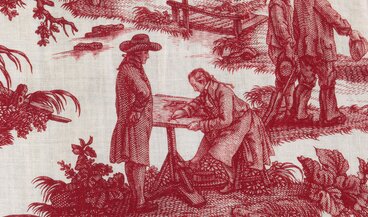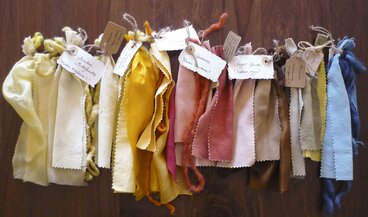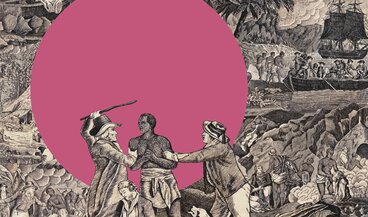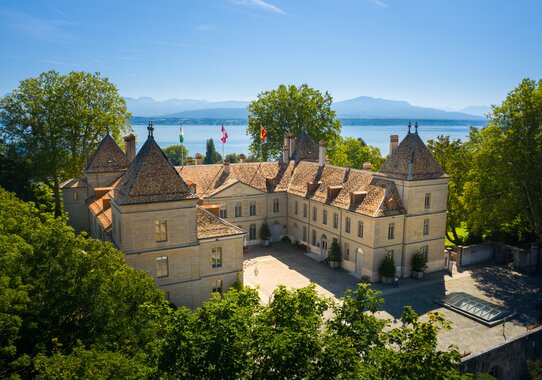accessibility.sr-only.body-term
The permanent exhibition Chintz. How a Fabric Conquered the World, interweaves local and global history and considers Switzerland’s links to the wider world. It sheds light on the involvement of many Swiss people in key chapters of the modern period, including industrialisation, the triangular trade, colonisation and slavery.
The exhibition forms part of the Chintz Centre, which also comprises a study room, a bed of dye plants in the kitchen garden, and a wide range of natural dyeing workshops.
Between the 17th and 19th centuries, printed cotton fabrics transformed Switzerland into one of the world’s leading textile-producing nations. Chintz making, along with weaving and spinning, played a key role in the country’s industrialisation and cemented its role in global trade. Yet surviving evidence of this is limited, and often little known.
This multimedia resource is a compilation of records relating to the industry. Designed in partnership with the Historical Dictionary of Switzerland, the interactive map documents the various centres of chintz manufacture in Switzerland in the 18th century.
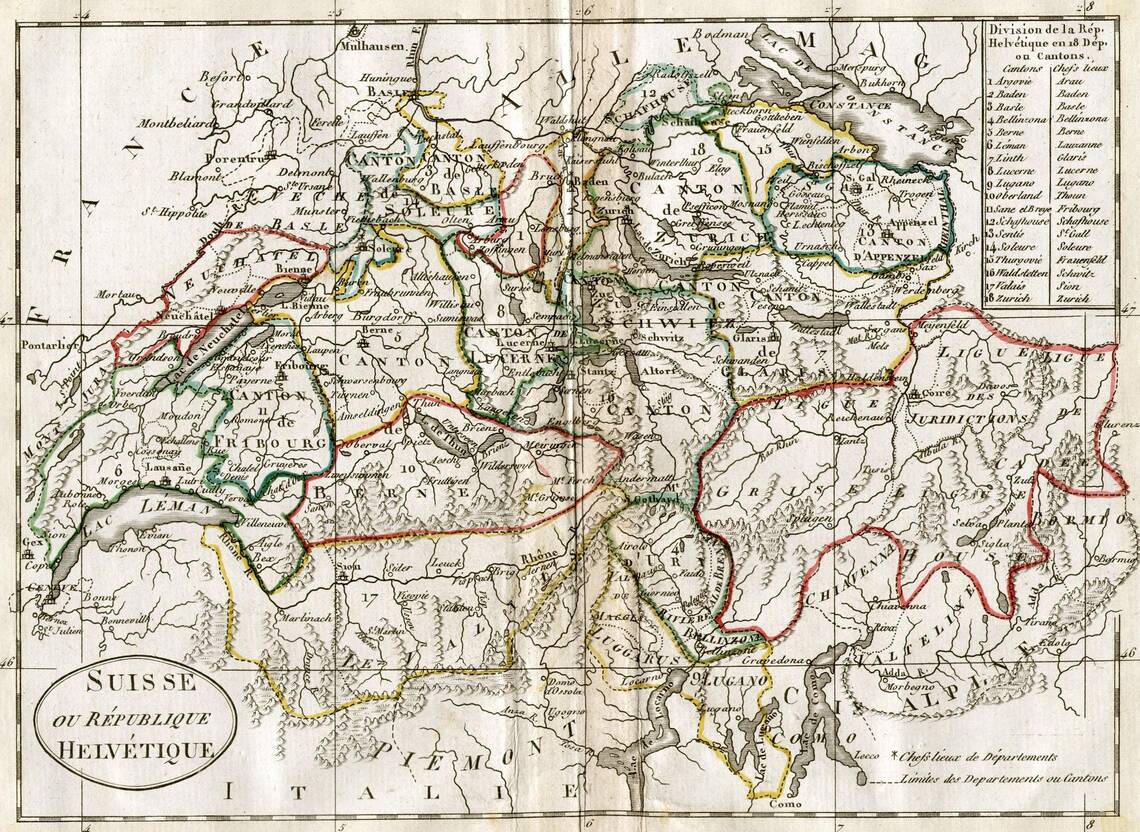
Bibliography
Sa 7.3.2026
13:30 – 17:00 Uhr
Workshop
Sa 6.6.2026
13:30 – 17:00 Uhr
Workshop
We 1.7.2026
13:30 – 17:00 Uhr
Workshop
Sa 4.7.2026
13:30 – 17:00 Uhr
Workshop
Sa 29.8.2026
13:30 – 17:00 Uhr
Workshop
Sa 14.11.2026
13:30 – 17:00 Uhr
Workshop
Sa 28.11.2026
13:30 – 17:00 Uhr
Workshop
Come and spend some time with us, we propose a large selection of activities for different target groups. A motivated and experienced team is awaiting you.
Guided tours can also be arranged outside of the official opening hours upon request.
|
Registration |
2 weeks in advance |
|
|
Duration |
60 minutes; special arrangements available upon request |
|
|
Group size |
max. 25 people per tour |
|
|
Languages |
German, French, Italian and English. Others upon request. |
|
|
Cost |
CHF 120 for the guided tour + CHF 10/person admission Children up to 16 years free. |
Indiennes. Un tissu révolutionne le monde!
Published by La Bibliothèque des Arts, 2018, 232 pages and 200 illustrations in colour
Price CHF/€ 49.- (shipping fees not included)
This book is on sale at the museum shop, in bookstores or can be ordered frominfo.prangins@museenational.ch or +41 (0)22 994 88 90
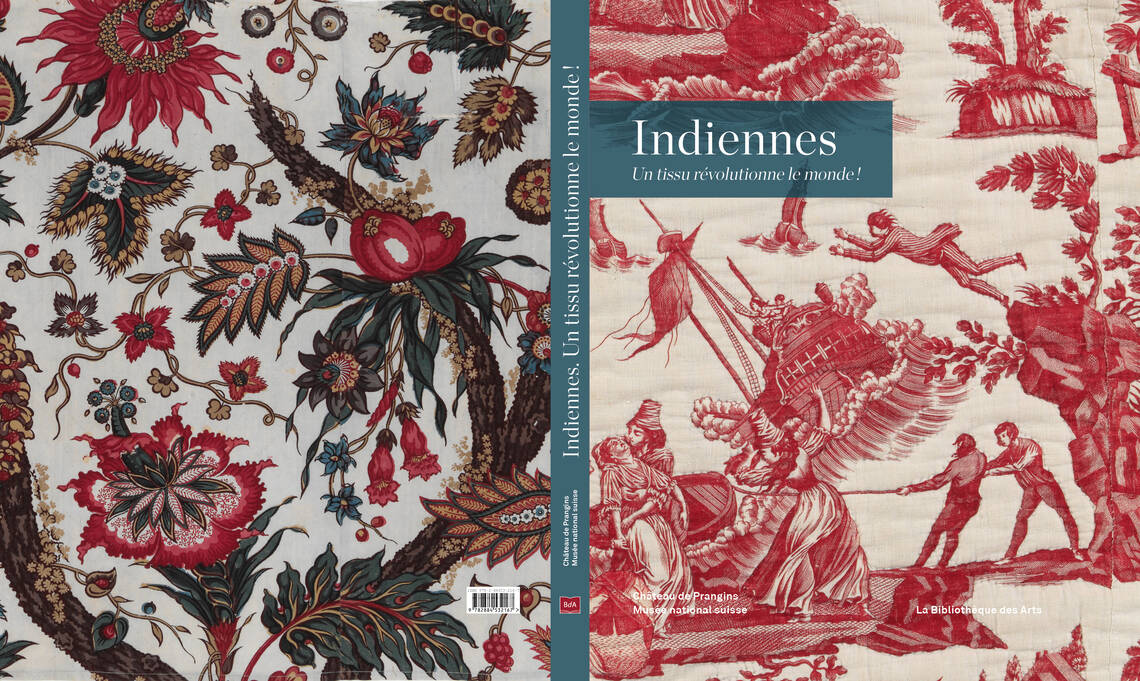
This lavishly illustrated work of reference offers an overview of the history of chintzes, highlighting the role played by Swiss people in a flourishing industry. The catalogue section includes introductions to the main factories and production sites in Switzerland and France, extensive analyses of the cloths, and thematic presentations.
Chintz. How a Fabric Conquered the World.
Published by the Swiss National Museum, 2021, 64 pages and 44 illustrations in colour
Price CHF 15.- (shipping fees not included)
This book is on sale at the museum shop or can be ordered frominfo.prangins@museenational.ch ou au +41 (0)22 994 88 90
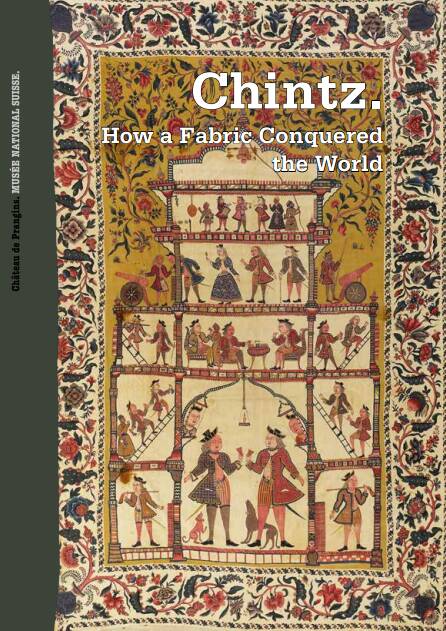
Chintz. How a Fabric Conquered the World
The new permanent exhibition Chintz. How a Fabric Conquered the World, which opens at Château de Prangins on 8 May, interweaves local and global history and considers Switzerland’s links to the wider world. It sheds light on the involvement of many Swiss people in key chapters of the modern period, including industrialisation, the triangular trade, colonisation and slavery. The exhibition forms part of the new Chintz Centre, which also comprises a study room, a bed of dye plants in the kitchen garden, and a wide range of natural dyeing workshops.
Traders in Geneva importing fabrics from India to sell in Bordeaux, from where they are sent on to Brazil to be used as clothing for African slaves. Merchants in Basel setting up in Nantes to better fund and combine cargoes for the slave trade. Officers from Neuchâtel in the service of the powerful Dutch East India Company. Swiss plantation owners or managers making use of slave labour. These histories and many more besides are just a few aspects of the fascinating yet extraordinarily complex saga of chintzes: printed cotton fabrics that are regarded as the first ever global product.
The new exhibition allows visitors to retrace the evolution of chintzes across four continents, exploring their impact on the various places where they were produced and consumed. The journey leads from India to Brazil via Switzerland, France and western Africa, emphasising the Swiss presence and role at every stage. Indeed, in many places around the world, on different scales and in different ways, people from Switzerland helped either directly or indirectly to write the story of chintzes. This is an engrossing account of fashion and globalisation: a tale of imitation, prohibition, industrial espionage and contraband.
A study room adds an extra dimension to the exhibition, with information on manufacturing techniques, the iconography of chintzes and the productions of various factories. Meanwhile, a wide range of complete natural dyeing courses offers a hands-on experience of the world of chintz.
The new Chintz Centre at Château de Prangins takes a global and interdisciplinary approach to a fascinating area of cultural history and enables visitors to better understand some of the issues of globalisation, both yesterday and today.
Project management and curatorship: Helen Bieri Thomson, assisted by Barbara Bühlmann and Matthieu Péry
Images
Tatiana Oberson
Head of Marketing, Communication & Fundraising
- General management Swiss National Museum: Andreas Spillmann
- General Management Château de Prangins: Helen Bieri Thomson
- Project management and curatorship: Helen Bieri Thomson, assisted by Barbara Bühlmann and Matthieu Péry
- Scientific consultancy: Bouda Etemad, Gilles Foster, Aziza Gril-Mariotte, André Holenstein, Bernard Jacqué, Jacqueline Jacqué, Lisa Laurenti, Liliane Mottu-Weber, Giorgio Riello, Béatrice Veyrassat
- Texts: Helen Bieri Thomson, Barbara Bühlmann, Matthieu Péry
- Translations: Alessia Schiavon, Geoffrey Spearing et Sandra Wyss
- Iconographical research: Barbara Bühlmann
- Exhibition and graphic design: Flyingkoenig, Vevey
- Exhibition furniture: Menuiserie Grocq et Goy, La Rippe, Metal-System Diserens Sàrl, Echandens
- Decorator: Nigro & Fils Peinture Sàrl, Nyon
- Printing: Meylan publicité and Signage: Concise
- Technical management: Philippe Humm (dir.), André Schärer
- Lighting: André Schärer
- Communication and marketing: Tatiana Oberson (dir.) and Sylvie Nickbarte
- Graphic design (communication): Plates-Bandes Communication, Lausanne
- Cultural education and events: Ana Vulic (dir.), Céline Allard, Ines Berthold, Susanna Bühler, Sylvie Gobbo, Mirta Grüter, Susanna Hurschler, Marie-Claire Jahiel Romanet, Debra Kinson, Hester Macdonald, Muriel Marchese, Sylvie Nickbarte, Nathalie Pellissier, Killian Perret-Gentil, Matthieu Péry, Ludivine Proserpi, Heidi Rasmussen, Stéphane Repas Mendes, Sian Sibley, Laura Weber, Madeleine Wüthrich, Valérie Zanani, Farès Zemzemi
- Workshops on natural dyeing: Nathalie Pellissier
- Dye plants in the kitchen garden: Stéphane Repas Mendes
- Web, IT and multimedia terminals: René Vogel (dir.), Ueli Heiniger, Pasquale Pollastro, Danilo Rüttimann and Toni Vu (stagiaire)
- Multimedia terminals: texts and iconography: Helen Bieri Thomson, Barbara Bühlmann, Matthieu Péry
- Films: Direction and production: Octuor films production, Vevey – Florian Burion
- Films: Concept and coordination: Helen Bieri Thomson
- Films: translations: Clarissa Hull-Gut, Clare McAllister, Alessia Schiavon
- Films: Experts: Sadakne Baroudi, Thomas David, Mohamadou Dieye, Bouda Etemad, Bettina Giersberg, Aziza Gril-Mariotte, Bernard Jacqué, Reto Jenny, Benjamin Jody, Sibyl Kindlimann, Robert Labhardt, Helen Oplatka, Prasannan Parthasarathi, Xavier Petitcol
- Audio stations: Florian Burion, Roman Hüben (réalisation) ; Studio Alea Jacta.CH, Jérôme Cuendet (prise de son); Gabriele Bazzichi, Irene Godel, Rachel Gordy, Aurore Jecker, Christoph Lanz, Lucia Placidi, Julien Tsongas, Michel Voïta (voix)
- Legal: Beatrice Käser
- Administration and finance: Odile Rigolet (dir.) and Jacqueline Naepflin Karlen
- Reception: Susanne Hurschler, Véronique Laurent Kandem and Anita Rachetta Bays
- Security: Pedro Schreyer (dir.), Damien Becker, Mohamed Bouchatta, Raphaël Conrad, Mark Goldschmid, Jean-Claude Hunsinger, Priscilla Repond
Conservation-restauration
- General management of the Centre of collections: Markus Leuthard
- Project coordination: Françoise Michel, Elke Mürau
- Conservation/restoration and preparation of exhibits: Nikibarla Calonder, Anna Jurt, Elisabeth Kleine, Iona Leroy, Françoise Michel, Carolin Muschel, Sarah Longrée, Ulrike Rothenhäusler
-
Frame construction: Studio Arte, Zürich
-
Logistics and installation of exhibits: David Blazquez (dir.), Christian Affentranger, Simon d’Hollosy, Reto Hegetschweiler Markus Scherrer
- Loan services: Bernard Schüle (dir.), Maya Jucker, Angela Zeier
- Lender: Musée Théodore Monod d'art africain, Dakar
- For their essential support: Hirzel-Stiftung
Thanks
To all people and institutions who have contributed to the project
-
Archives cantonales vaudoises
-
Archives d'État de Genève
-
Archives de l'État de Neuchâtel
-
Archiv Streiff, Glarner Wirtschaftsarchiv
-
Bernisches Historisches Museum
-
Bibliothèque cantonale et universitaire, Fribourg
-
Bibliothèque cantonale et universitaire, Lausanne
-
Bibliothèque de Genève, Centre d’iconographie
-
Bibliothèque municipale de Lyon
-
Bibliothèque publique et universitaire, Neuchâtel
-
Dictionnaire historique de la Suisse
-
Historisches Museum Basel
-
Historisches Museum Thurgau
-
Institut National Genevois
-
Musée de l’Areuse
-
Musée d’art et d’histoire de Genève
-
Musée d’art et d’histoire, Neuchâtel
-
Musée de l’impression sur étoffes, Mulhouse
-
Musée d’histoire de Nantes, Château des ducs de Bretagne
-
Musée de la Toile de Jouy
-
Musée historique, Lausanne
-
Musée historique de Vevey
-
Musée Théodore Monod d’art africain, Dakar
-
Museum Bischofszell
-
Museum des Landes Glarus
-
Museum Rietberg
-
Nouveau Musée Bienne
-
Staatsarchiv Kanton Aargau
-
Staatarchiv Kanton Basel-Stadt
-
Staatsarchiv Kanton Thurgau
-
Zentralbibliothek Zürich
-
Fanny Abbott, Aurélie Allais, Philippe de Bosset, Claude Bornand, Werner Bosshard, Romain Bourgeois, Rahel Büchli, Tamara Chanal, Pierre Conne, Mohamadou Mustapha Dieye, Frédéric Elsig, Géraldine Galfetti, Bettina Giersberg, Aziza Gril-Mariotte, Krystel Gualdé, Martin Hampel, Bernard Jacqué, Romain Jurot, Lisa Laurenti, Frédéric Laux, Vincent Lecourt, Laurence Margairaz, Ernest Menolfi, Isabelle Mercier, Malick Ndiaye, Helen Oplatka, Xavier Petitcol, Alain Peyrot, Margret Ribbert, Mylène Ruoss, Christian Sonderegger, Daniel Suter, Toni Vu

